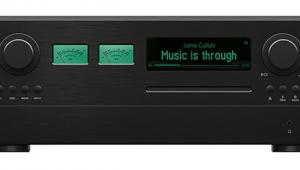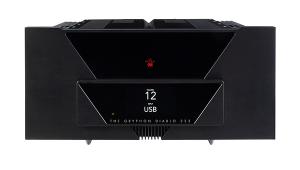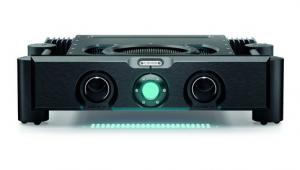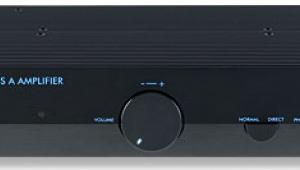Mola-Mola Kula Integrated Amplifier
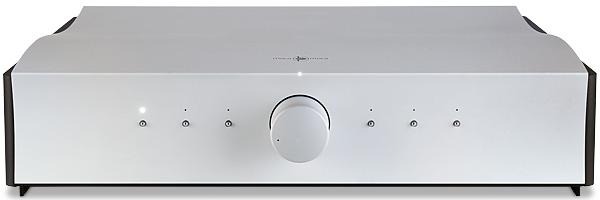
 Originally inspired by Class D maven Bruno Putzys, the innovative Mola-Mola brand returns with a fully integrated version of its separate amp, DAC and phono technologies
Originally inspired by Class D maven Bruno Putzys, the innovative Mola-Mola brand returns with a fully integrated version of its separate amp, DAC and phono technologies
Never judge a book by its cover… or an amplifier by its industrial design. Take the Kula integrated amplifier from Groningen-based Mola-Mola – at first glance you may raise an eyebrow at this relatively compact, if solidly-built and undeniably stylish, integrated amplifier's £9900 price-tag. Then, complete with optional onboard DAC (£5999) and £1799 MM/MC phono stage, it adds up to just under £17,700 – well, that should raise the other brow into an expression of some shock.
This amplifier certainly looks distinctive with its swoopy, wave-like casework – and the name, the company continuing its Hawaiian trend by signing-off this model after the word for 'school' (presumably of fish, rather than the place of learning). But only by looking beyond this does the concentrated talent inside the box become clear. You see, while integrated amplifiers typically offer an entry point to a range, featuring trimmed-down versions of flagship technologies, here we have a one-box solution that brings together all its manufacturer's expertise – uncut, undiluted and uncompromised.
Take It To The Limit
The Kula doesn't just draw on the company's Makua preamp [HFN Aug '17] and Tambaqui DAC [HFN Nov '19] but brings them onboard complete with a power amplifier of in-house design, based on its previous work with NCore Class D technology. As Mola-Mola's Ewald Verkerk explains, the company is now some way down the line from its introduction of the Kaluga amplifier [HFN Aug '17], based on amplifier whizz Bruno Putzey's NCore design, a development of his work on Universal Class D amplification going back two decades while at Philips.
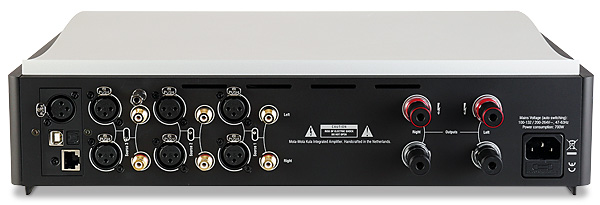
While the original NCore technology has stood Mola-Mola in good stead, when it came to the development of the Kula, the company decided, as Verkerk puts it, that 'this amplifier deserved much more than just a brushed off, lower power version of Kaluga's amplifier board'. So what we have here is not just the Makua, Kaluga and – if you take the DAC option – Tambaqui, all in one box, but actually a thoroughly revised take on Mola-Mola's entire amplification platform.
Verkerk explains that 'We first set off recalculating and optimising the entire NCore feedback circuitry for optimum audio performance, resulting in significantly lower distortion figures, higher damping factor and improved power supply [noise] rejection capabilities. Each individual part of the Kula is supplied by its own dedicated power supply, the main one being tightly regulated and semi-split to power each amplifier channel separately, ensuring effortless low ends'.
It's Logical
Mola-Mola has paid particular attention to maintaining full compliance with strict EMI regulations without compromising audio performance – not a given with switching power supplies and Class D output stages. Designing a 'tight and compact PCB' has been key to this goal, as is illustrated by the logical layout seen in our inside shot.
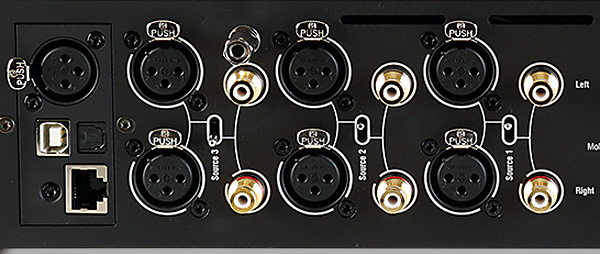
Even in our fully-loaded sample it's clear to see what does what, and where, even though this is very far from being a hairshirt 'straight wire with gain' style of amplifier. Mola-Mola doesn't do simple – instead it makes flexible products with real-world facilities, leveraging its technology to offer a wide range of options, not to mention very fine sound quality.
For example, while there are three sets of analogue inputs on RCAs, and three balanced on XLRs, you choose between them using little switches on the rear panel, while internal logic decides how those inputs are processed in the preamp. With the phono option installed, you can use the Mola-Mola app, which connects your phone or tablet to the amp via Bluetooth, to set up all the phono parameters – gain, loading, equalisation (with a wide range of presets) and bass and treble roll-off – for a particular input, and assign that to one of six presets on offer.
Meanwhile, if you have two turntables, or play older pre-RIAA records, you can set the Kula up for those too. You can even add polarity inversion of one or both channels, mono summing and just about anything else you'd need to play even the most arcane of recordings.
A wide range of adjustments are also available for other inputs, from renaming, adjusting relative level, designating an input as 'direct', or bypassing the volume control if the Kula is used with a preamp or AV processor. The digital option here is slightly unusual – yes, it has optical, AES/EBU and asynchronous USB, and can handle datastreams at up to 384kHz/32-bit and DSD512 via the last of these, but there's no coaxial digital input, and the Ethernet connection allows the Kula to function as a Roon endpoint, a brief it fulfils rather well.





